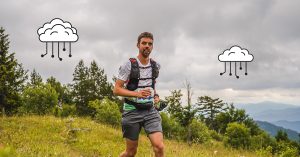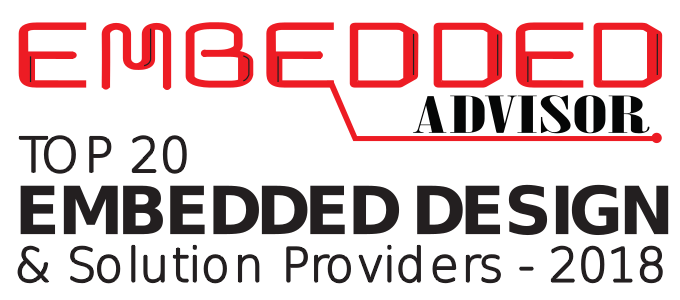
🏃♂️🔌 Hidden Connection: Meet Luka – Hardware Engineer and Passionate Ultramarathon Runner! 🔌🏃♂️
🧠🏃♂️ Have you ever wondered if there’s a connection between the work of a hardware engineer and the hobby of running ultramarathons? Our colleague Luka, a hardware engineer and ultramarathon runner, has helped us find the answer.

What is an ultramarathon? How did you come up with the idea to start pursuing this hobby, and what preceded that decision?
An ultramarathon is any race longer than the standard marathon distance of 42.195 km. The range of these races is incredibly wide, spanning from 50 km on roads to over 300 km in the wilderness, mountains, deserts, and more. In our surroundings, ultramarathons can be divided into two categories.
The first category consists of ultramarathons that are run on circular tracks. These races can be either distance-based or time-based. Distance races are typically 50 and 100 km, while time-based races range from six, 12, to 24 hours, focusing on how much distance a participant can cover within that time. The second category includes trail ultramarathons, often run in mountainous areas, where the goal is to cover a specific trail.
The idea of getting involved in ultramarathons struck me in 2018. Previously, I participated in traditional athletic disciplines, mainly half-marathons, and marathons, aiming to achieve better results. However, over time, family, work, and other responsibilities demanded more attention. I realized that I wouldn’t be able to progress in those disciplines due to the lack of time and energy for quality training. That’s when I decided to try trail ultramarathons. These races take place in fascinating mountain locations, offering the chance for a unique adventure regardless of my level of preparation. In February 2018, I began preparing for my first ultramarathon, which took place on Mount Jadovnik in August of the same year.
How many ultramarathons have you completed, and what are your upcoming plans?
I’ve completed five ultramarathons so far: the Jadovnik Ultra (111 km), the Fruška Gora Ultra (108 km) three times, and the Tara Ultra (64 km). Out of these, I wasn’t able to finish the Fruška Gora Ultra once. Currently, I’m focused on participating in trail ultramarathons as I’m more drawn to the challenges of varied terrains. Flat courses, which usually involve short loops of 500 to 1000 meters, don’t motivate me as much. For the next year, I have plans to attempt the ultra-extreme marathon on Mount Fruška Gora covering 134 km. Additionally, I’m considering taking part in an ultramarathon on Mount Jahorina. There are numerous races in the region that I’d love to explore in the future, such as the Transylvania 100 km, the 100 Miles of Istria, the Dalmatia Ultra-Trail, the Pirin Ultra (160 km) in Bulgaria, the Olympus Ultra (100 km) in Greece, and the ultimate challenge, Spartathlon, a 246 km race in Greece.

Are there any similarities between the process of solving technical problems as a hardware engineer and preparing for an ultramarathon?
The approach I apply in hardware development bears striking resemblance to how I prepare for ultramarathons. In both cases, the goal is a well-organized, systematic process. At the outset, priorities are established. In hardware, this pertains to the essential components – whether the priority is a low device cost, leading to compromises in quality accordingly, or if the goal is high technological demands regardless of the price. In ultramarathons, this relates to the race’s requirements. The way I prepare for uphill sections and whether I’ll run or walk them depends on the race length. I also need to consider whether there will be steep downhill sections and how to condition my legs for that, given that I primarily train on flat terrain. The initial planning boils down to optimizing the allocation of available resources to meet the demands. Various problems arise during the process, leading to changes in the initial plan, sometimes more and sometimes less.
What are the similarities when you finish a project and an ultramarathon, and how do you find motivation in both areas?
I feel differently when I finish a project and an ultramarathon. Upon completing a project, I experience relief and excitement, while after finishing an ultramarathon, I don’t feel anything due to fatigue.
How do you plan your time and achieve a balance between work and training?
As a parent of three children and an engineer, it’s clear where priorities lie. I integrate ultramarathon training into a tight schedule. Currently, I train relatively modestly, around 6 hours per week. This is enough for me to complete ultramarathons, but it’s a bit insufficient for serious racing. As time goes on, I anticipate gradually increasing my training hours to prepare for more challenging races. I resonate with the sentiment of American ultramarathoner Dominic Grossman, who is also a father and an engineer. He described ultramarathons as “a vehicle that helps me navigate life more smoothly.”

What are the pieces of advice that can be applied both in the realm of hardware and ultramarathons?
It’s important to ensure that the process is heading in the right direction. Avoid wasting time and energy on unimportant matters. Always keep priorities in mind. When it comes to hardware, maintaining focus on the key functionalities required for the project is crucial, while additional features that can be easily implemented shouldn’t consume time. That’s what used to take up too much of my time.
In ultramarathons, there’s no need to invest as much energy in fast sprints as I used to do when preparing for shorter distances. Don’t be afraid to step out of your comfort zone and shed old habits. In hardware, things don’t always have to be done in the usual way; the goal should always be improvement. There’s no need to fear changing the chip used in previous projects. Ultramarathons are a straightforward yet relatively new sport. Research is ongoing, which means influential coaches are changing some old habits rooted in standard athletics. I regularly keep track of innovations and incorporate them into my training.




